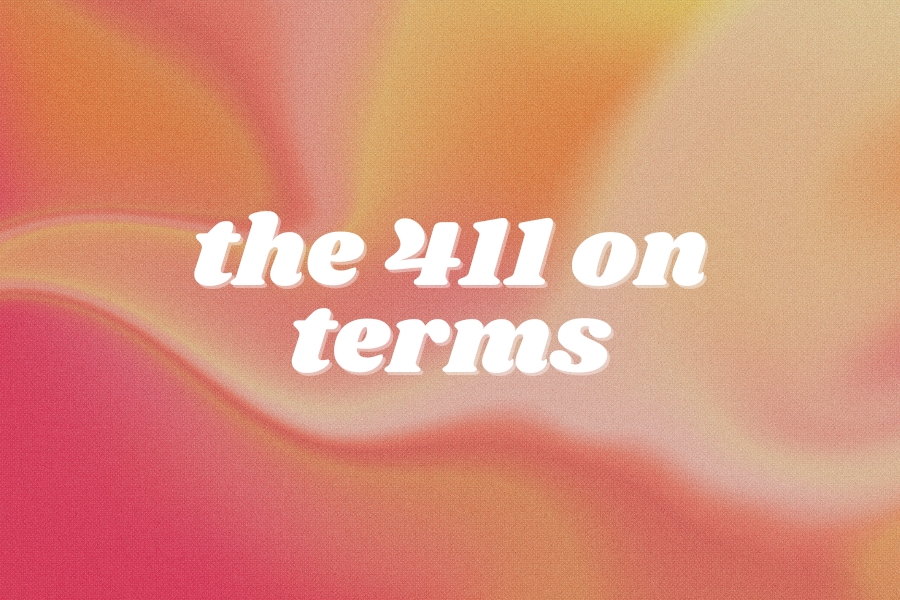Disclosure: This post may contain affiliate links, meaning I get a commission if you decide to make a purchase through my links, at no cost to you. Please read my disclosure for more information.
As you’re perusing the site, I wanted to give a bit of a run down on some standard terminology you may see around here on the website. This will cover the types of food locations, basic terminology around diets and restrictions, and a little on ticketing information.
Consider this your Theme Park Bites glossary. If this is your first time here, I highly suggest checking out The Theme Park Food Guide to get yourself better acquainted with all things, well, food!
This concise guide may have more terms introduced over time, but for now this should be good enough. Hope this is helpful.
Types of Food Locations
Cart Stands/Kiosks: A mixture between a temporary structure that can be moved around to suit the theme park’s needs or a stationary structure that has been built to live in a certain area permanently or for a few seasons before either being retrofitted, moved, or destroyed to move in something else.
These are your random spots that you can go up to whenever and grab something quickly like a bottle of water, a bag of chips, a pretzel, popcorn, among other small snacks and treats. Sometimes these locations also carry alcohol, too, like a Tiki Bar.
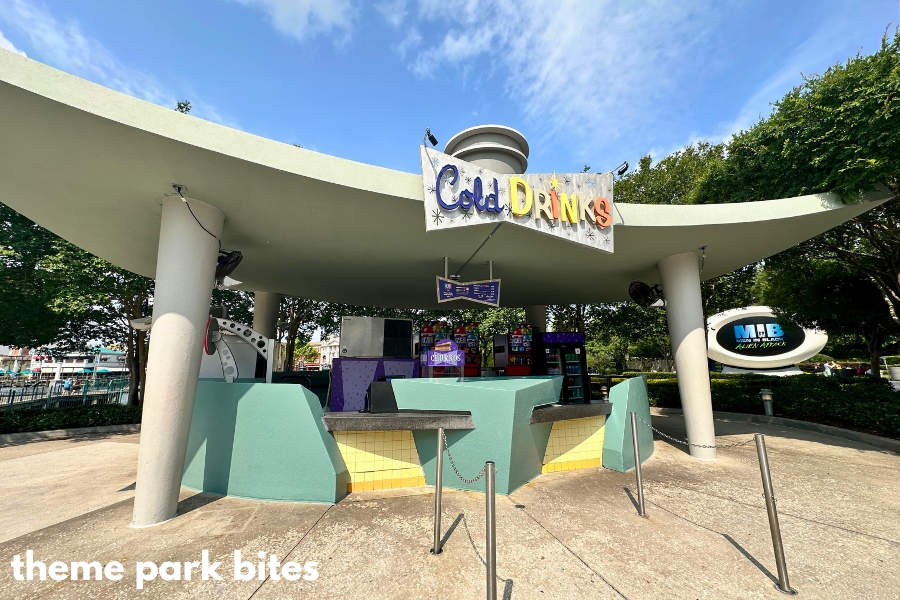
Drinks and Snacks: This includes everything under beverages (soda, water, ICEE’s, etc), beer, wine, and alcohol, alongside neutral snacks like chips, popcorn, and fruit. Typically found at carts/kiosks or outside locations with some kind of awning outside in between rides for a quick pick-me-up.
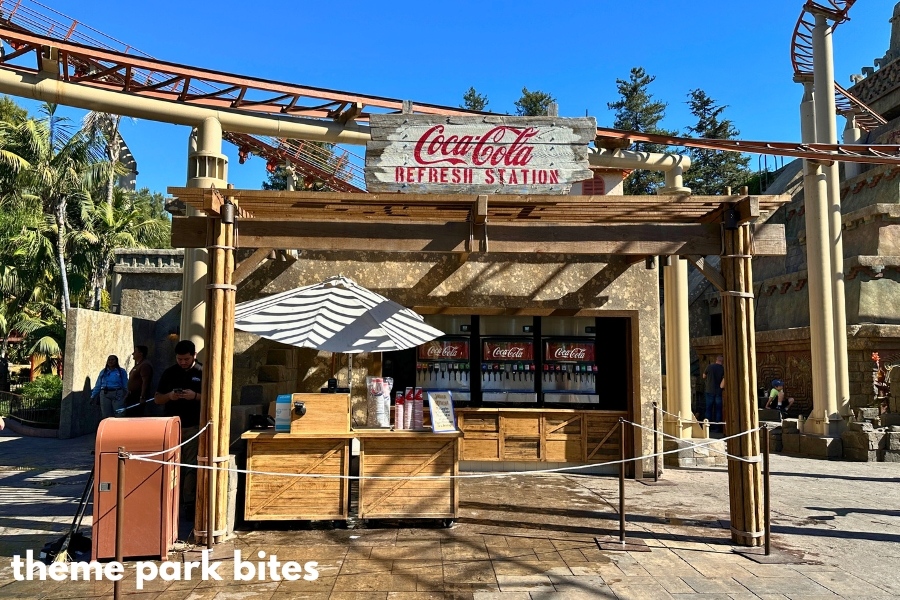
Sweets and Treats: Anything that would be considered something you wouldn’t eat too much of normally like cotton candy, churros, cinnamon bread, funnel cakes, ice cream, things of that nature. You can find them at cart stands/kiosks or even inside permanent buildings (typically ice cream parlors).
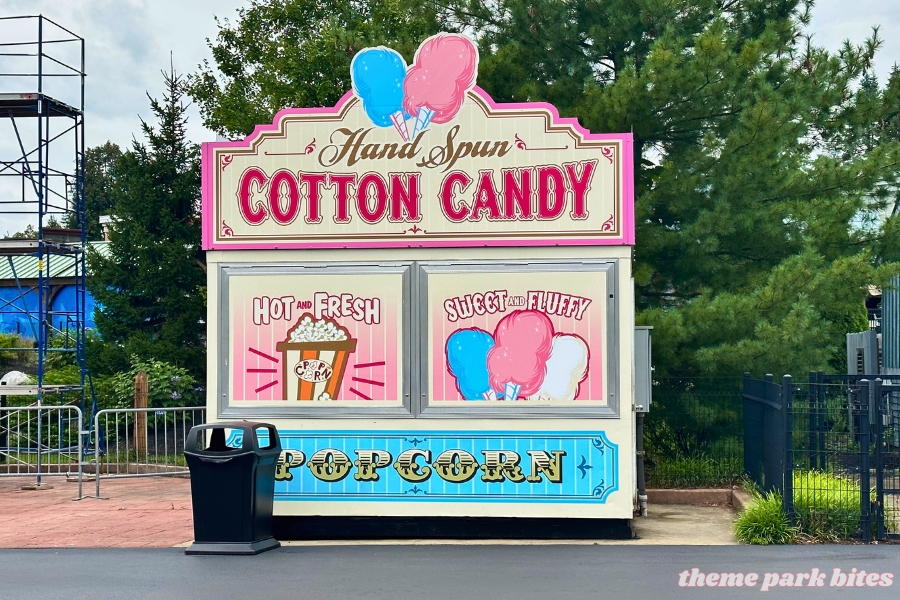
Counter/Quick Service: Thought of the fast food locations where you can hop in quickly and either stand in line for a meal to order or use mobile ordering and pick up your food when it’s ready. Think of the McDonald’s, Panera’s, and Chick-Fil-A’s of the fast food world.
Some locations may actually have those brands in-park (e.g., Busch Gardens Tampa Bay has Chick-Fil-A) and they’ll fall under this umbrella term.
These locations will have heartier food selections in the form of burgers, hot dogs, pastas, salads, pizzas, but will not have a waitstaff to accommodate you. You’ll be able to grab your own utensils, condiments, and choose your own seating wherever you’d like to eat your meal.
Many locations are a mixture of indoor and outdoor seating, some come with air conditioning while others do not.
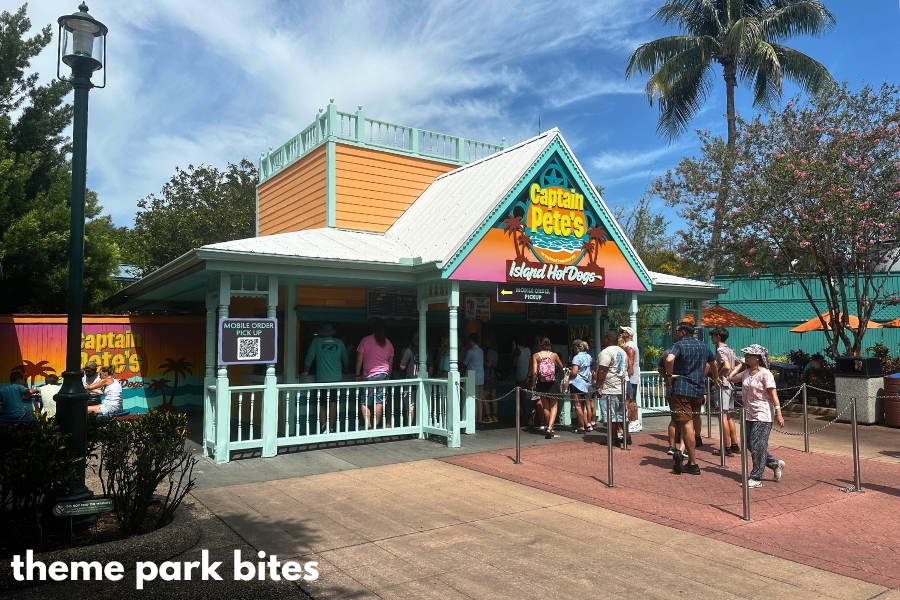
Full Service/Table Service: Think of your Red Lobster, Olive Garden, or The Cheesecake Factory – that’s what full/table service is. You’ll have a member of staff waiting on your table with the expectation of great service (and if they have done well, rewarded with a tip) on your part.
Depending on the season having a reservation is needed, some with a deposit, some without.
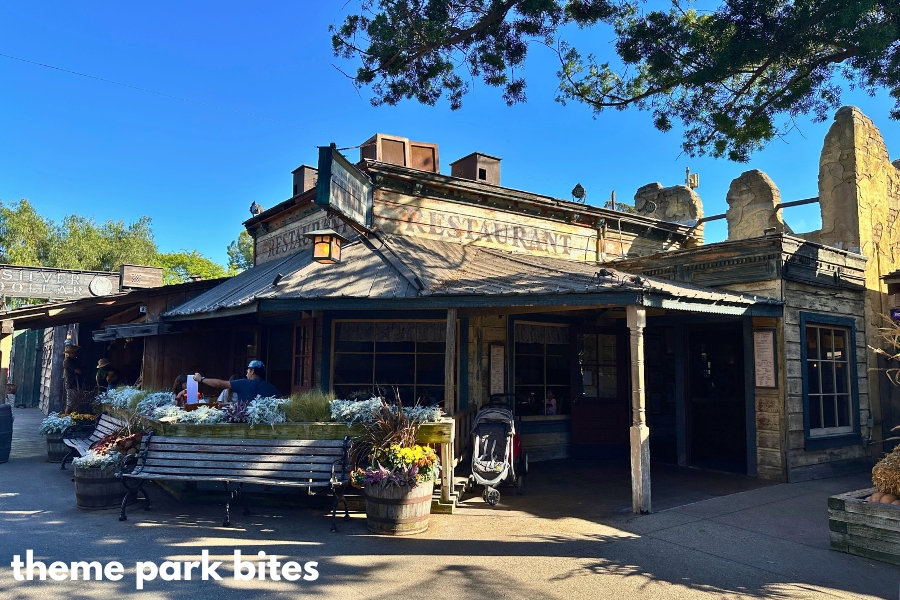
Fine Dining: Usually the crown jewel of a restaurant on property. Typically seen at Disney where they have more space and freedom to play around with a menu with a stellar chef’s team indoors and in air conditioning. Some locations have a dress code while others, where they are in-park, do not require them.
Some fine dining locations will feel like full/table service, but they are labeled this way by the theme parks, so we take what we get.
Examples of these locations at Victoria & Albert’s at the Grand Floridian at Walt Disney World and Le Cellier Steakhouse at EPCOT. Reservations are expected at establishments with a deposit like these with some exceptions.
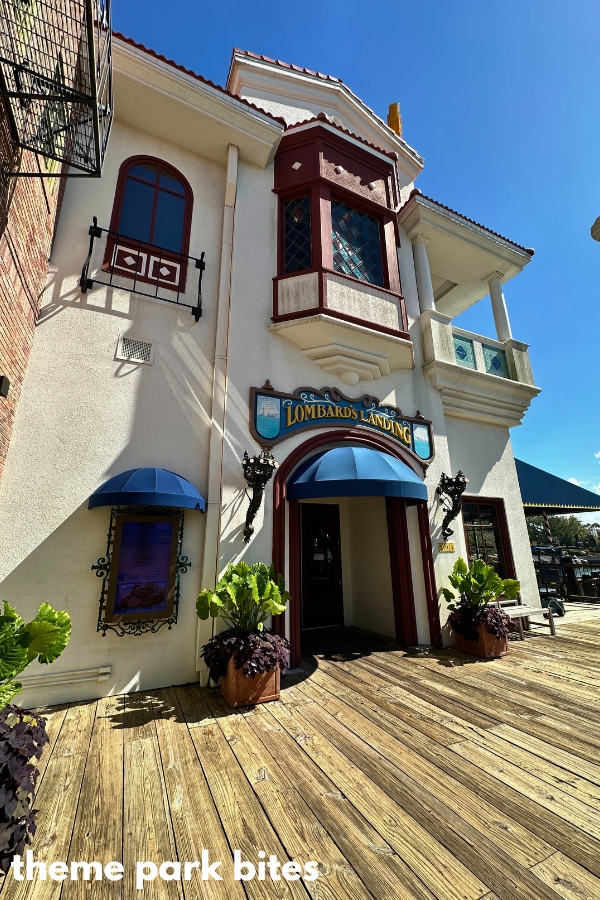
Character Dining: Typically found on Disney properties at locations like Cinderella’s Royal Table, Crystal Palace, Chef Mickey’s, ‘Ohana, among many others, this kind of dining has popular characters doing personal meet and greets while you dine inside of an air conditioned location. These are considered full/table service even though they usually are also all-you-can-eat buffet-style.
You can find options for all meal times and there can sometimes be special dining events during the holidays, too.
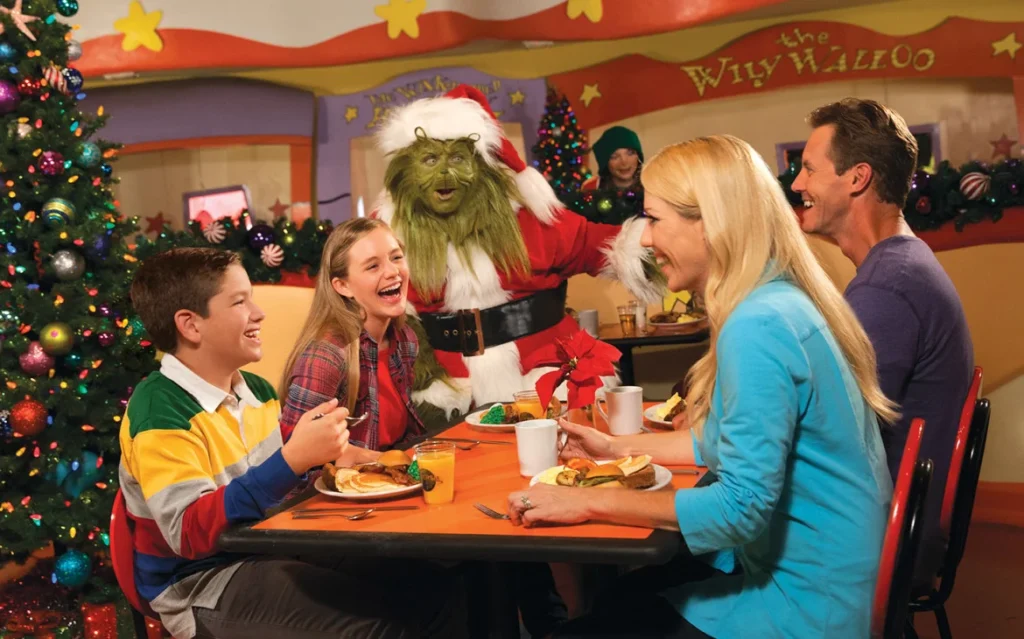
Live Entertainment/Dinner Shows: This is an evening show with a sit-down family-style dinner that is all-you-can-eat or a regular dinner that offers a guaranteed seat at a nighttime show with live entertainers to a specific theme. Think Hoop-dee-Doo Musical Revue, Fantasmic VIP Package, and the now obsolete (but spectacular) Spirit of Aloha show at Disney.
These have a set price that you pay upfront, show up, and you’re good to go. Price ranges are all over with a tendency to be over $60 for adults and going as high as in the $100s.
VIP or Firework show packages give you guaranteed seating in a specific section to get, what would typically be, the best seating or more space in between your party and has times that you can choose to have your dinner before heading to the nighttime show.
Dinner shows have the entertainment happening wile you’re dining.
My favorite dinner show was Spirit of Aloha. I was so enamored much that I didn’t even notice the performers calling me on stage until one of them hula’d close to me with their arms out. ?
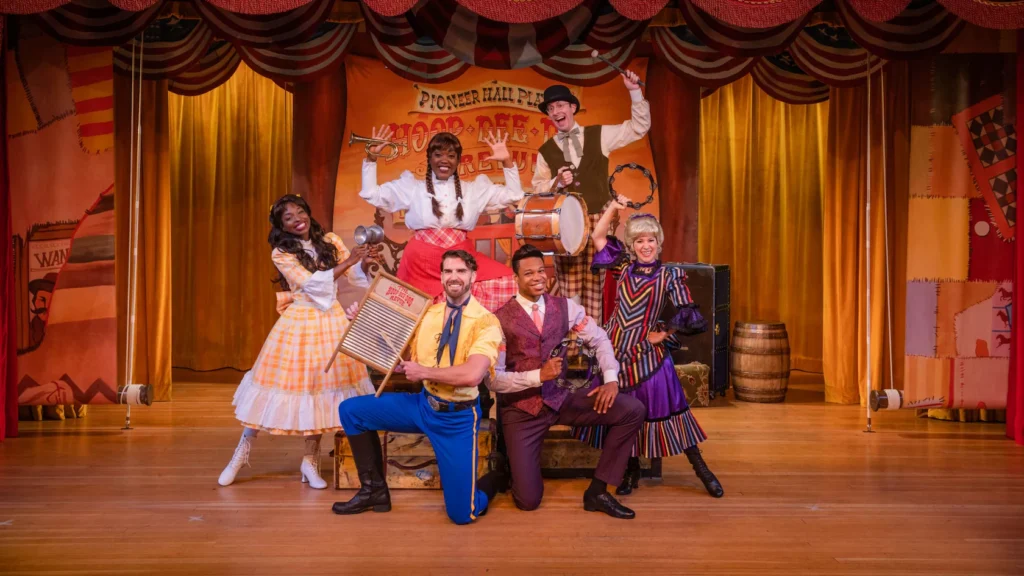
Dietary Preferences/Restrictions
Dairy-Free: Someone who potentially is lactose-intolerant, has a milk allergy, or simple dietary preference to exclude all instances of dairy products such as milk, cheese, butter, and yogurt.
Nut-Free: Usually attributed to an allergy, which skew toward the severe side, all instances of nuts (peanuts, chestnuts, hazelnuts, coconuts, among many others) or drupes (cashews, pecans, almonds, pistachios, etc) are excluded from their diet. Extra precaution is necessary.
Pescatarian: A person fine with having fish and shellfish in their diet, but no other meat products.
Vegetarian: A person who will not eat meat products of any kind. Interchangeable with the term “plant-based.”
Vegan: Someone who goes a step further than vegetarianism, for either ethical, environmental, religious or dietary reasons, and eats nothing to do with an animal. That means the exclusion of eggs, honey, and milk byproducts.
Gluten-Free: An individual who either cannot process gluten (wheat, barley, rye) in their diet or has Celiac’s. This can be incredibly uncomfortable for an individual if their diet has any of these items in their food. Extra precaution is necessary.
Kosher: Food cannot contain meat and dairy simultaneously (i.e., cow and milk). Food must be butchered in a specific way and must not contain pork or shellfish as well.
Halal: Food must follow Islamic dietary laws with consideration on how the meat was butchered and prepared.
Recommended: How to Navigate Theme Parks with Allergies
Ticketing Information
Season Pass: Not to be confused with an Annual Pass (AP), the season pass is good solely for the season you buy it in and usually only for the park you buy it from. They allow for unlimited visits, but usually that’s where it stops.
Some season passes come with free parking and a few discounts here or there, but nothing that stands up against the Annual Pass. There are parks that don’t even offer a season pass because people don’t buy them compared to an AP, however, they do cost less making it more economical for someone who is still looking to enjoy a theme park on a tighter budget.
Annual Pass: Not to be confused with a Seasonal Pass, annual passes are good for a full calendar year regardless of when the pass was bought. During promotional periods those timeframes may be extended, such as a 15-month promo (e.g., Universal Orlando, 2023) or if bought during specific sales during the year (typically toward the end of the summer season) that lock you in for the next year at a lower rate.
They come with better perks than the season pass, such as access to more parks under the park’s company (i.e., Six Flags – up to 27 properties) free parking (usually the higher the tier you’ll get preferred or VIP parking, too), discounts on foods and drinks, a set number of free guest tickets or discounts for guest tickets, and even skip-the-line privileges among much more.
Recommended: Theme Park Restaurant Menus
Miscellaneous
Mobile Ordering: Ability to order food from your smart phone. Some theme parks only allow you to see their menus (if any) when in-park and/or order when you’re currently there as well.
Recommended: Avoid Theme Park Food Lines and Use Mobile Ordering
Hope this helps you navigate the pages easily and if there’s a term here that you believe deserves to be here, please let me know so I can update it quickly.
And if you haven’t as of yet, please follow us on our other social media channels (YouTube, Instagram & Tik Tok – @themeparkbites) to stay up to date on food reviews. Thank you for allowing us to be your tasty theme park companion!
